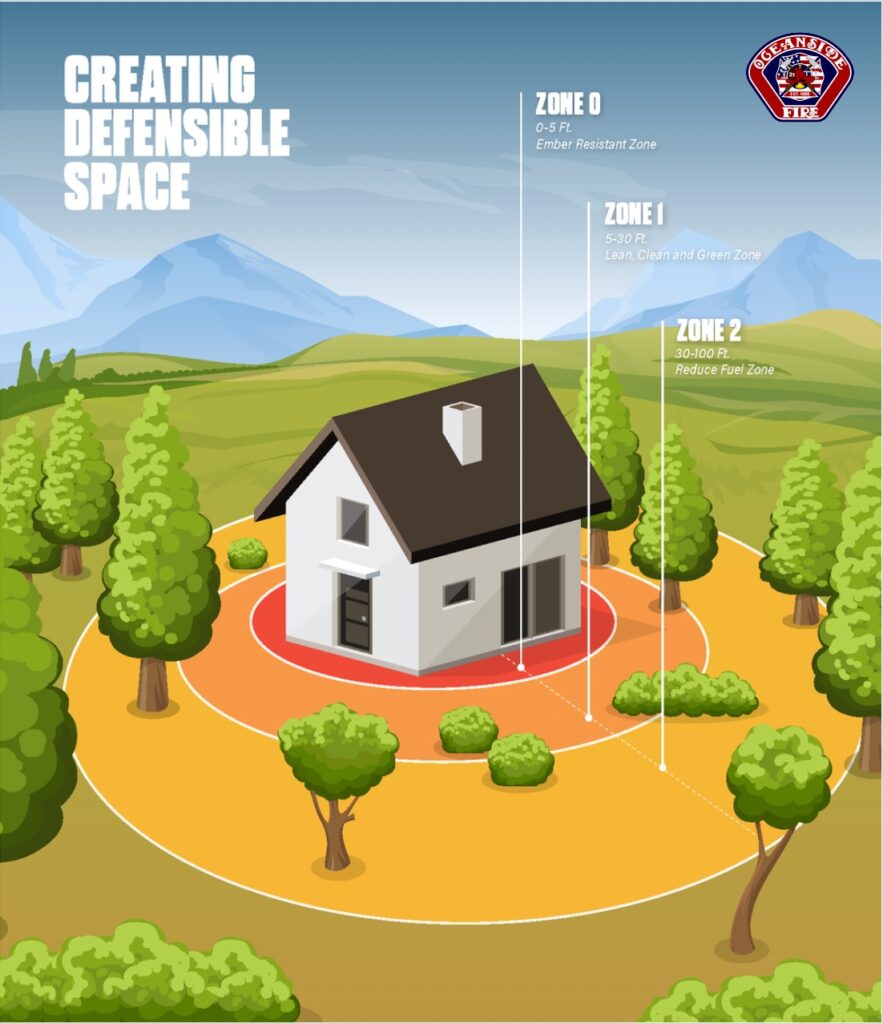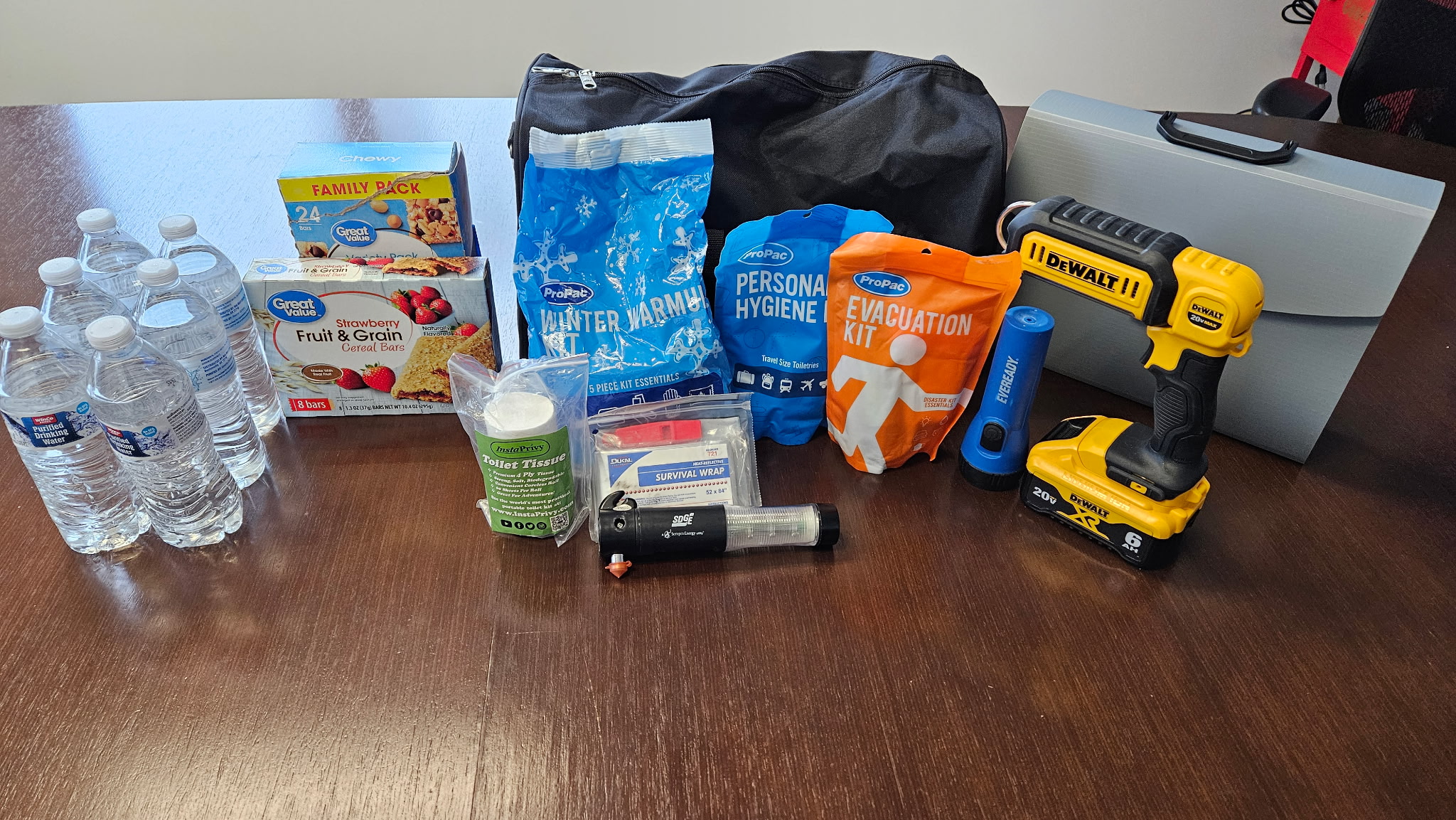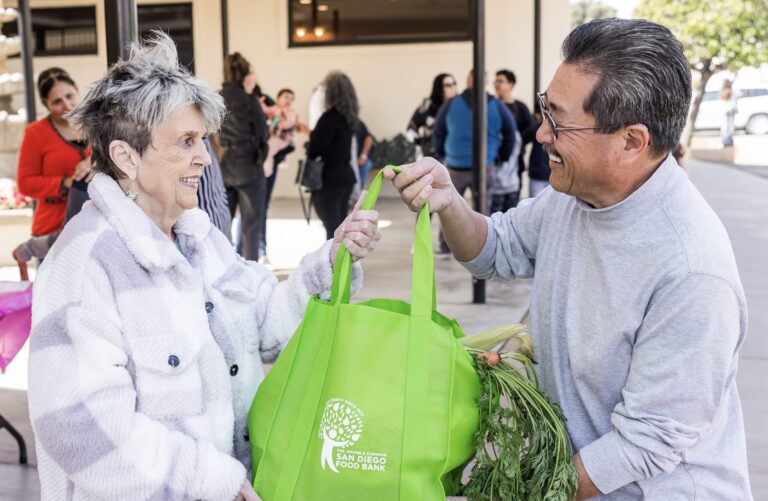By Melanie Slone

“If you had five minutes right now to leave your home because you received an evacuation order, would you be ready?” asks Carina Martinez, Part-time CERT Coordinator / Emergency Preparedness Coordinator, Oceanside Fire Department. “We don’t know when an emergency or disaster will happen, but it will at some point, so everybody needs to be ready,” she adds.
Depending on where you live, you have different hazards, explains Carina. North County San Diego is prone to:
- Earthquakes: The advice is, “Drop, cover, and hold on, especially with schools,” says Carina. “If you’re outside, do you have power lines near you? Do you have big trees around you? What other hazards are around you?” She says it’s important to protect your neck. “It is not a recommendation to stand in a doorway,” she says. “Get under a sturdy table if you have that.”
- Wildfires: Cut brush back from around your home. Heed emergency warnings. “Even with evacuation orders, you make the decision to leave,” Carina explains. “Don’t put yourself in that situation where you want to defend your home, you want to fight the fire on your own. You’re just putting yourself at risk.” Oceanside Fire Department offers free smoke alarm installation, and landlords are required to keep updated fire alarms.
- Flooding: Evacuate when you can. Never drive through standing water. Move to the highest ground.
- Power Outages: “If someone truly depends on a medical device and the power goes out, what is their backup plan? Have they contacted SDG&E and let them know?” Carina asks.
- Evacuation Warning: Leave when you have time. Assess how many ways out you have before you face an emergency. “SDG&E holds fairs on emergency readiness. There are community resource centers with snacks, water… they also allow individuals to charge their devices. Typically, at a library or community center,” says Carina. LISTOS California states, “Your immigration status does not matter. Everyone is welcome at an Emergency Shelter.”
- Shelter in Place: It could be something like a hazmat spill or police looking for dangerous person.
- Other Emergencies like hurricanes, tsunamis, and dangerous suspects in your area.
Emergency Go Bag
Carina recommends an emergency go-bag kit in your home, car, and workplace, like she has. “I have multiple bags in my house and in my car,” she says. “We have to consider that maybe for the first 72 hours, there might not be any help available. It could be even longer than that. Community members should be prepared for 3–5 days.”
The go bag should have:
- Water, one gallon per person per day. If we’re talking about a family of five, that would be five gallons for the family of five per day.
- Food preparable in power outages. Consider any allergies or special needs.
- Important documents: Copies of passport, birth certificate, driver’s license.
- Flashlight, no candles; batteries; chargeable battery packs for phones; first aid kit.
- Medication, prescription glasses, diapers, formula, books & games for little ones.
- NOAA weather radio; whistle to signal for help.
- Pets and other animals: Food and water, medication, paperwork, vaccinations, microchip, list of local vet clinics.
- Most shelters allow household pets, but not livestock. Is your pet crate trained? In the event of evacuation order, can you get your pet into the crate immediately?
- If someone is disabled, is there a plan to help that person?

Evacuation Plan: Workplace, Home, Family
Carina recommends having a family emergency plan and maintaining good relationships with family and neighbors. “If the phone lines are impacted, you might not be able to reach people here in the county or maybe surrounding counties,” she says.
In case of an emergency, designate a meeting place close to home and one farther from home. If you have family out of the country, have their contact number.
Emergency Apps
“In emergencies, there will be a lot of law enforcement. So, make sure you have the apps on your phone to verify evacuation orders and other information,” says Carina.
- SD Emergency (Alert San Diego): Preparedness, recovery, mitigation; emergency shelter info. Be sure to read the full notifications.
- Genasys Protect: Evacuation notices, orders, warnings, shelter in place. Notifies of your area even if you’re out of town. Can save 5 locations for family members. Tracks where you’re going.
- Partner Relay Community leaders put out message in other languages, including Spanish and ASL.
- Alert San Diego Registration
- Hi-Lo Siren: Used to evacuate, along with messaging.
- Know local police and sheriff department non-emergency phone numbers.
- The Mexican Consulate has a Plan B.

Courses to Prepare You
Emergency services may not be able to respond quickly, and you may have to take care of yourself and your family. There are courses in English, Spanish, and other languages available to get you ready.
- Local LISTOS courses: Check Oceanside fire social media for information.
- LISTOS California is statewide campaign.
- CERT: 24-hour course over 4 weeks, only in English.
- Pet Preparedness Flyer
- How to Build a Go Bag
- Earthquake Info. Sheet (English)
- Earthquake Info. (Spanish):
- SDG&E Flyer (Spanish)
Other organizations also offer courses. “Dra. Villarreal has been a huge advocate”, says Carina. “She has allowed me to come to her parent workshops and let people know about some of the emergency preparedness tips…Without her support, we wouldn’t have as many people come out for courses from the Spanish-speaking community.”
Universidad Popular offers Emergency Preparedness courses in San Marcos.




